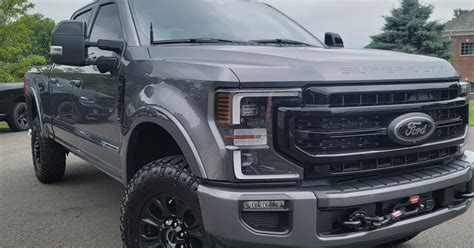PPF Curing in Hot Weather: Tips and Tricks
Paint Protection Film (PPF) offers exceptional protection for your vehicle's paint, but its installation and curing process are significantly affected by temperature and humidity. Hot weather presents unique challenges, potentially leading to issues like fish-eyes, trapped moisture, or uneven curing. This article provides expert tips and tricks for successfully installing and curing PPF in hot weather conditions, ensuring a flawless, long-lasting finish.
What Makes Hot Weather Challenging for PPF Curing?
High temperatures accelerate the curing process, which can be both beneficial and detrimental. The faster curing can lead to quicker installation times, but it also increases the risk of:
- Trapped air and moisture: Heat can cause the film to adhere too quickly, trapping air bubbles or moisture underneath.
- Fish-eyes: These unsightly imperfections occur when contaminants are trapped between the film and the paint.
- Uneven curing: Certain areas might cure faster than others, leading to inconsistencies in the film's appearance and performance.
- Film shrinkage: Extreme heat can cause the film to shrink unevenly, leading to wrinkles or lifting.
How to Prepare for PPF Installation in Hot Weather
Proper preparation is key to a successful PPF installation in hot weather. Here’s what you should do:
- Choose the right time of day: Early morning or late evening offer cooler temperatures, ideal for working with PPF. Avoid the hottest part of the day.
- Work in a shaded area: Direct sunlight will significantly increase the temperature of the vehicle's surface and the film itself.
- Pre-cool the vehicle: If possible, park the vehicle in a cool garage or shade for several hours before installation to reduce its surface temperature.
- Use a quality installation solution: The right solution will help with proper film adhesion and prevent trapped air and moisture. Make sure it's compatible with high temperatures.
H2: Optimizing the PPF Application Process in High Temperatures
- Work quickly and efficiently: With faster curing times, you need to work swiftly and methodically to avoid issues.
- Use a heat gun cautiously: While a heat gun can help with shaping and smoothing the film, avoid excessive heat that could damage the film or cause it to cure too quickly.
- Use multiple smaller panels if needed: Instead of installing large pieces, break down the film into smaller, more manageable sections to increase efficiency and reduce trapped air.
- Pay extra attention to edges and seams: These areas are particularly prone to problems in hot weather, so make sure they're properly sealed and smoothed.
H2: Managing Curing and Post-Installation Care in Hot Weather
- Monitor the curing process closely: Watch for any signs of uneven curing, air bubbles, or other imperfections.
- Avoid direct sunlight during curing: Keep the vehicle in a shaded area to prevent the film from curing too quickly and unevenly.
- Consider using a curing accelerator: Some specialized solutions aid in even curing and can reduce the risk of issues. Check with your PPF supplier.
- Post-install care: Even after installation, the film needs protection from extreme heat. Avoid direct sunlight for as long as possible to prevent issues.
H2: What are the signs of improper PPF curing?
Signs of improper curing can include:
- Visible air bubbles: These are trapped pockets of air between the film and the paint.
- Fish-eyes: Small, dome-shaped imperfections in the film's surface.
- Uneven gloss: Certain areas of the PPF might appear duller or shinier than others.
- Wrinkles or lifting: The film might wrinkle or lift from the surface due to uneven curing or shrinkage.
If you notice any of these signs, it’s crucial to address them promptly. You may need to remove and reapply the film.
H2: Can I use a fan to help with PPF curing?
A fan can help with curing in hot weather, but use caution. While a gentle breeze can improve the airflow and help prevent overheating, strong or direct airflow might cause the film to dry out too quickly, leading to imperfections.
Conclusion
Installing and curing PPF in hot weather requires extra care and attention. By following these tips and tricks, you can significantly improve your chances of a successful installation, resulting in a flawless and long-lasting paint protection for your vehicle. Remember, proper preparation and diligent execution are key to overcoming the challenges posed by high temperatures.

